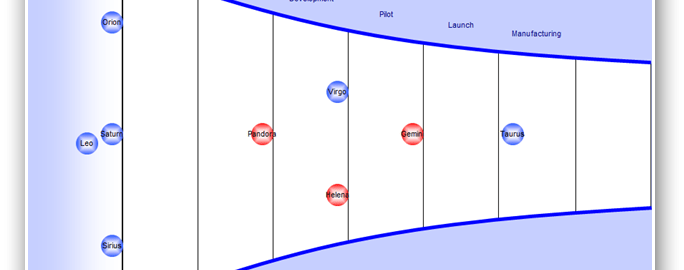Mind Your Pipeline
A typical stage / phase-gate product development process would start with an initial Investigation or Exploration phase where data is gathered about the market opportunity for a new product, the product and development project is defined, and an initial business case is prepared. When this is done, an initial gate review is typically conducted. This is where the development pipeline funnel significantly narrows as less opportune projects are not approved to move forward. So if 30% of projects are typically killed at this point or subsequent gates, projects representing 142% of the pipeline capacity need to be initiated for investigation.
When these projects are started and are then approved after the first gate review, resources may not be available to continue work on these projects in a subsequent Feasibility or Concept Development phase. A cardinal rule of pipeline management is to avoid overloading the pipeline because there are only three possibilities (or some combination of these possibilities):
- Shortcuts are taken with the development process
- Work takes longer to perform than planned and there are delays
- Significant overtime is required
The recommended approach is to place the approved projects “on hold” until resources are freed up from completing projects to begin work on an approved project. The Project Management Office or a project administrator needs to monitor the project pipeline and determine when resources become available to begin these approved projects. Further, lean product development practices suggest that a regular cadence be established with the release of projects. Unfortunately, this is a step that is often missing in many companies resulting in overloaded pipelines and “bunching” of projects causing rolling bottlenecks. A tool like PD-Trak is required to monitor resources and determine when resources are freeing up to move forward with approved projects.


